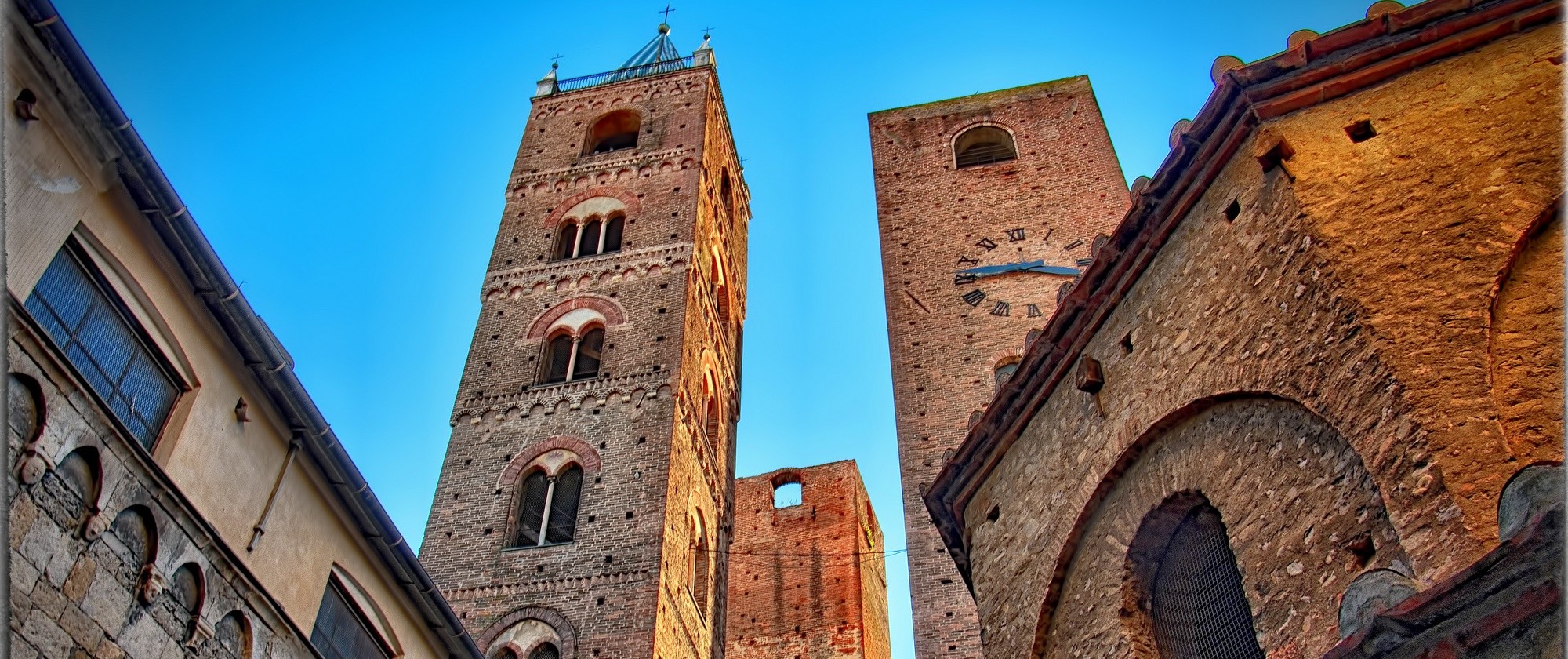
A visit to the medieval historical center of Albenga
- April 01, 2018
- by
- Residence Oliveto
On holiday … in history!
A different dive? Immerse yourself in history with a walk around Albenga. Just 6 km from Ceriale, it is also reachable by bike on the road that runs along the Lungomare (the Seafront). A medieval historical center preserved very well and excellently integrated into the city center. You will immediately feel immersed in the past at the sight of the three towers, which have long been a symbol of this town. Mansions full of charm alternate with shops, bars and taverns, while maintaining the sense of protection and vigilance that it has had throughout the centuries.
The Roman Naval Museum
Very interesting and unique, the Naval Museum houses the wine amphorae found on the wreck of the Roman ship “Artiglio”, first century B.C. Recovered from the seabed around Gallinara Island in 1950, it is the largest ship found so far in the Mediterranean. Its cargo was made up of more than 10,000 amphorae that contained wine from Campania headed for the markets in France and Spain. The Museum exhibits these amphorae according to the original layout of the cargo. Other finds come from another ship that sank in the Gulf of Diano Marina. An extremely interesting experience for both the young and the old!
The famous “Blue Plate”
Near the Naval Museum, in Palazzo Oddo (the Oddo Mansion), there is another meeting with a unique object in the world that is waiting for you: the blue plate, dating back to the 2nd century AD, found in the area of the necropolis of the ancient Albingaunum. It is made of glass, with two winged cherubs dancing in honor of Bacchus. The effect of the chiaroscuro is really impressive and, even if you are not an expert in the field, you will have the feeling that you are in front of something that is incomparable and that will leave you speechless.
The Baptistery and the Cathedral
Speaking of uniqueness you are close to another rare, equally prestigious monument: the Baptistery. Dating back to the 5th century, it is very well preserved and, for almost twenty years it has been the site of celebrations again, baptisms in particular, which, celebrated in this place, are really accompanied by a unique air of sacredness. It is possible to visit it with a ticket that also includes a visit to the Diocesan Museum, where you will see many really precious finds, not only on a historical level. Now enter the Cathedral, dedicated to San Michele Arcangelo (St. Michael the Archangel), in the Romanesque-Gothic style of the 13th century, and let yourself be surrounded by a sense of the infinite and of the “sky” that this particular architectural style instills in visitors. Newsagents, paintings and statues will welcome you in this place that is the heart of the Albenga’s Catholicism. It’s time to take a break.
Right near the Cathedral, in Piazza San Francesco (St. Francis Square), you will find “La Cantina di Re Carciofo” (The Wine bar of the Artichoke King), a really delightful place, where you can taste excellent platters of salamis and first courses, prepared with local products, in the cozy atmosphere of the square, in the heart of history. If you prefer, not far away in Via Torlaro, Puppo is waiting for you with his famous farinata (it is a type of thin, unleavened pancake or crêpe of chickpea flour originating in Genoa and later a typical food of the Ligurian Sea coast) to let you taste what has always been a must in Liguria, as well as, of course, simple and genuine dishes (you cannot book, arm yourself with patience …).
During the month of July, there is something that is absolutely not to be missed, and that is the Historic Palio of the Rioni (Neighborhoods)- San Giovanni (St. John), San Siro (St. Siro), Sant’Eulalia (St. Eulalia), Santa Maria (St. Mary). For four evenings, the Historical Center of Albenga goes back in time to the Middle Ages. Dozens of attractions and refreshment areas, strictly set in the historical period, including the menus. There are also performances by fire-eaters, jugglers and musicians as well as skill tests in which the neighborhoods compete to obtain the desired “Palio”. Finally, the election of the “Pulcherrima Puella” (Very Beautiful Young Lady), the most beautiful of the “Palio”.
Did we manage to excite your curiosity?








